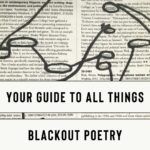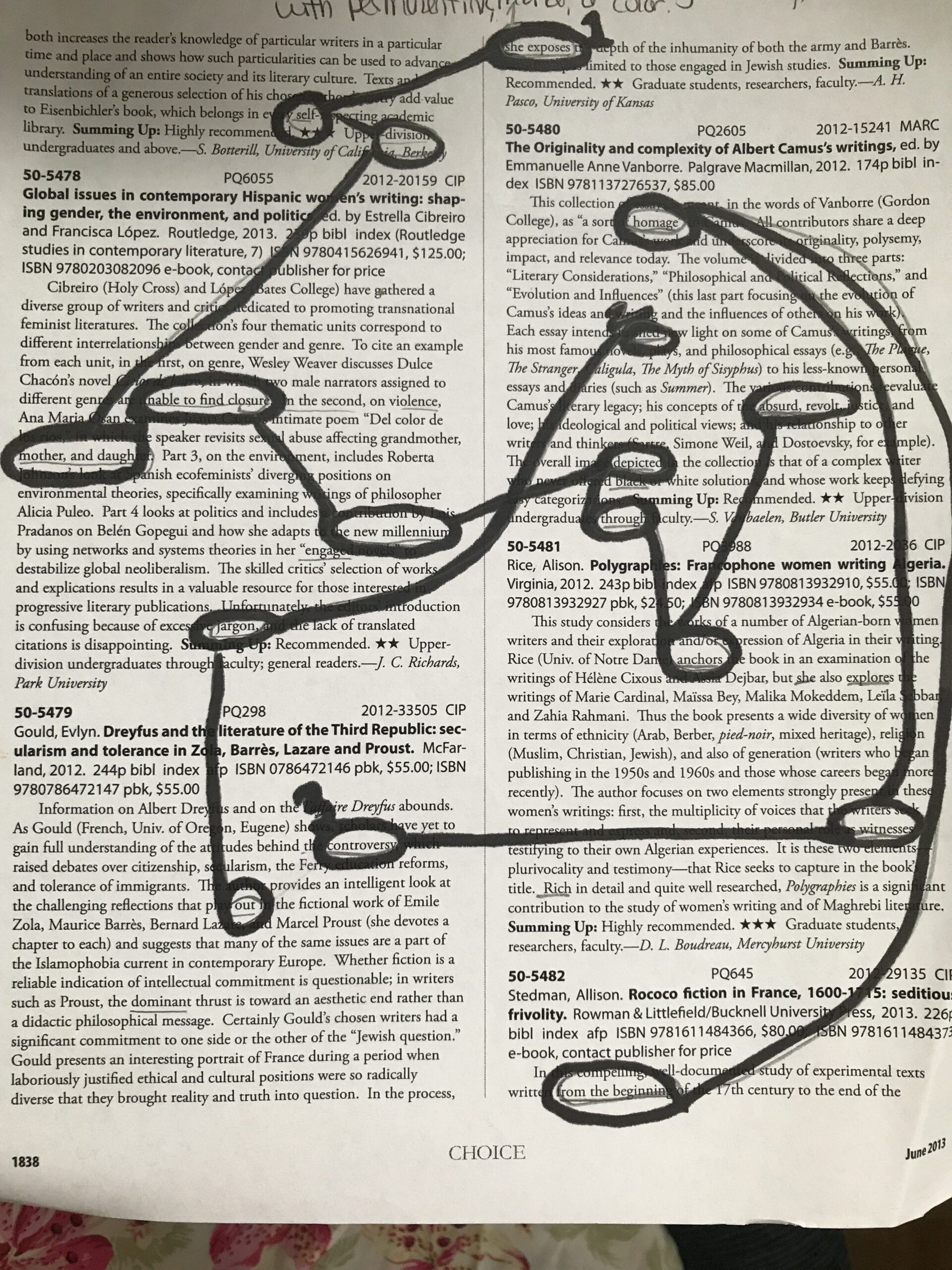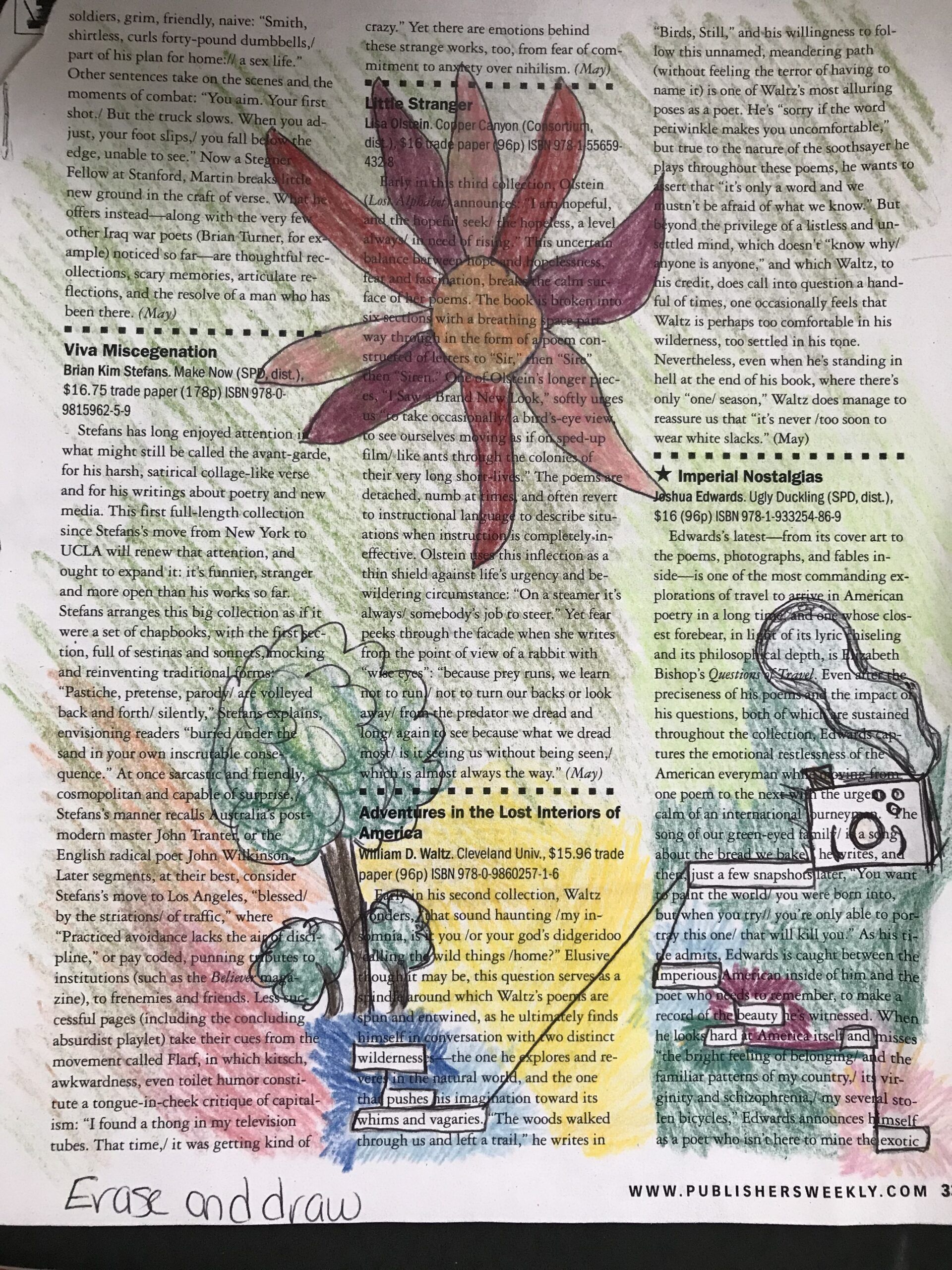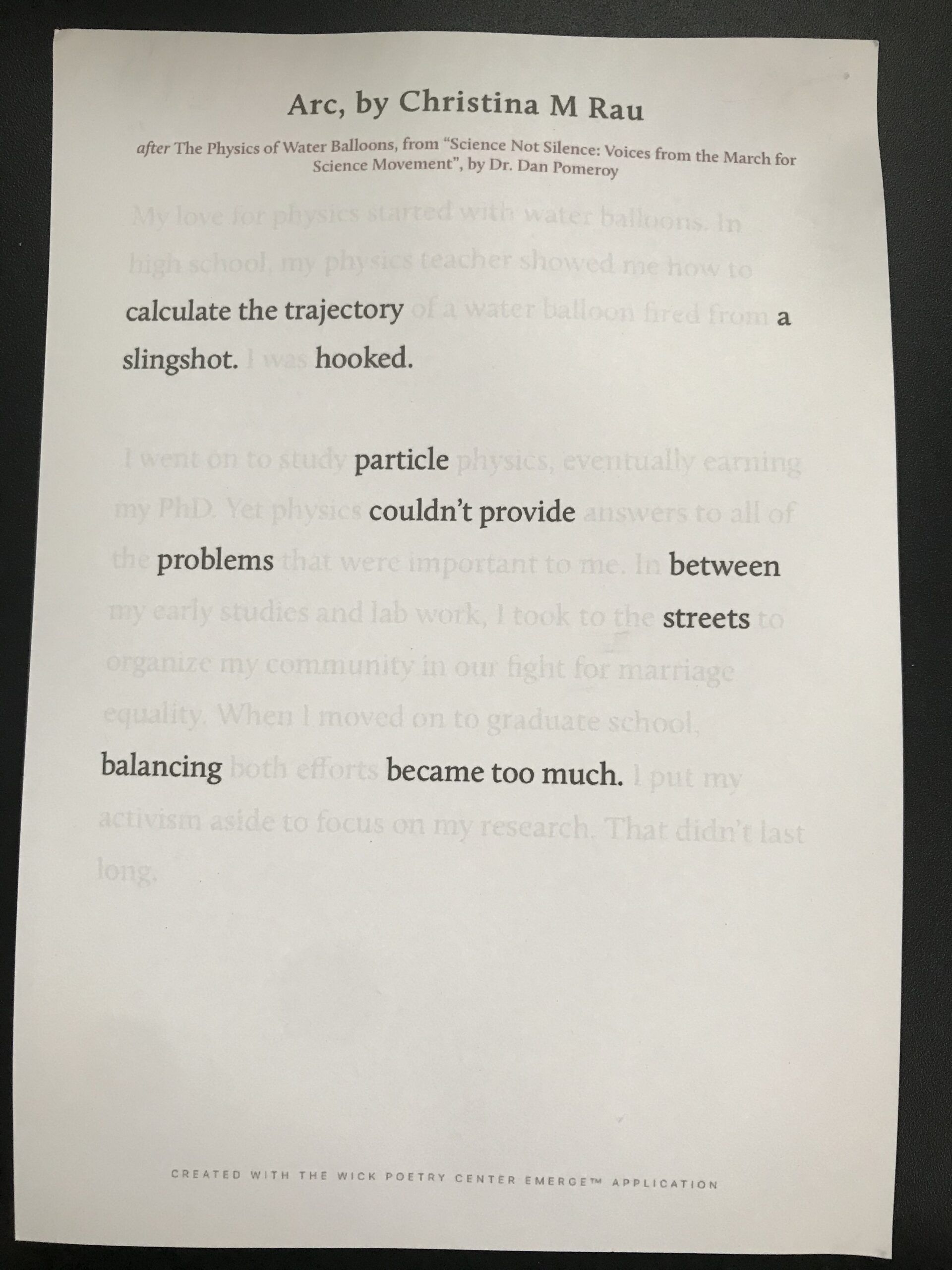Blackout poetry shows some of the original text, but usually all the original words are not apparent. The extent to which the original text shows through relies on the method the poets choose to create their new poem. I promise, the craftiness is coming. The methods for creating blackout poetry are various. These methods lead to poems that could be blackout-adjacent if you don’t want to put them all in the same category. Erasure poems are blackout poems — or they are a type of blackout poetry — or blackout poetry may be a type of erasure poem. Here, you decide: An erasure poem is a type of found poetry that the poet creates by crossing out, blocking out, blacking out, cutting out, whiting out, or literally erasing words from an already-existing text. See? It’s all kind of the same but also different.
Blackout Poetry Examples
Here are some examples to make blackout poetry a bit more concrete (concrete as in understandable, not concrete as in the form concrete poetry, which is a whole other category).
Form N-400 Erasures by Niina Pollari
Here’s a 100% blackout poem that appears in New York Tyrant Magazine. Pollari uses the text of an application for naturalization as a source. The poet then uses a black marker to blackout all the words surrounding the words of choice. The words of choice become a new poem. This poem uses the application words to comment on the process of naturalization. Sometimes the poem’s goal is to use the words of the source to comment on the source’s original meaning.
“Ferrum” [excerpt] by M. NorbeSe Philip
This poem uses legal language as a source. The space around the words is much like using the black marker to blackout the words. This is more erasure than blackout, but the idea and process are similar. Matthea Harvey’s Of Lamb and If The Tabloids Are True, What Are You? both feature poems that use white out instead of a black marker to white out the words of an original source. They are blackout poems more similar to Pollari’s poem.
Choosing A Method
One Line Through
Draw only one line through surrounding words so that all the original text appears but the poem comes through in the words not crossed out. Use the strikethrough option in your word processing program or a pen or pencil in hard copy. Example: The exclamation point is the most valuable punctuation mark you have in your arsenal, but it’s also the most dangerous. When used properly, a single exclamation point can set a light tone, convey excitement, and even demonstrate interest.
Blackout
Completely block out the surrounding words so that the only original text that appears are the words of the poem. Use the highlight option in your word processing program and choose black or a dark color or use a marker in hard copy. We see this in the Pollari example above.
Whiteout
Completely block the surrounding words, as above, but in hard copy with whiteout. We see this in the Harvey example above.
Cut Out
Use a hard copy text as the original source. Cut out the surrounding words so that literal holes appear where text has been and the remaining page contains the poem. Use scissors or an X-Acto knife in hard copy. Karen Massey’s “Hemaris Difinis” shows this method in in a publication by Silver Birch Press. This is super crafty!
Mapping
Circle or draw a box around words and then connect them with a line across the page, across columns, in any direction so that the poem does not follow the linear text. You can combine this method with other methods like one line through or blacking out with one color and then creating the map lines with another. In 2019, then 16-year-old Jewel Guerra won a blackout poetry contest run by The New York Times. Her winning blackout poem, “Stars,” is much like a map that uses the image of space to block the surrounding words.
Drawing
Get out your crayons and colored pencils. Pick the words of your poem and then draw or shade around them to blackout the source text you are not using. The drawing can be about the poem or can simply be shading.
Digital
When I attended the AWP Conference in Portland, Oregon, I found Poets for Science, curated by Jane Hirshfield. There I made my first app-based blackout poem. Sitting at an iPad station, I scrolled through a few source texts until I found a piece about water balloons and physics. Then I clicked on certain words, making them darker or lighter. In the end, I had a poem about science and also about humanity created with the Wick Poetry Center Emerge Application. Digital craftiness! This is not the only digital blackout option in town. As aforementioned, you can do a whole lot of blackout poetry using Word. You can also use PowerPoint if you want to get a little fancier. Blackout Bard: Blackout Poetry is a free app with in-app purchases. The rabbit hole for choices in this app is swift: select a source; select text font and color; select background color; select background image; select blackout color. There’s more. The rabbit hole is deep, my friends. Blackout Poetry Maker at Glitch.com works in a similar way. There’s a source text on screen. You then click words. Then you click Black Out. Then you have a poem. Also, think about toying around with the apps you may already use on your phone. Try out the Markup feature on your iPhone. See what you can do with Moldiv or Picstitch. You may already have apps that can work for you.
How To Actually “Write” The Poem
- Choose your source. It can be anything with words. Here’s a favorite of mine from A Very Curious Mind.
- Decide if you want to make a statement about the source or write a poem using its diction.
- Read it once without doing anything.
- Read it again and highlight, circle, underline, or check off the words that pop out to you.
- Choose your method — get really crafty with scissors and glue? grab your pastel kit? load up your word processor?
- Create / Write / Rewrite / Remix your poem.
- Share with the world — or keep it for yourself. For more about blackout poetry, check out this interview with Austin Kleon.For poems based on art, check out this Guide to Ekphrastic Poetry. As always, check out the poetry archives for more.




















































